Chiyu Dong
Depth Completion via Inductive Fusion of Planar LIDAR and Monocular Camera
Sep 03, 2020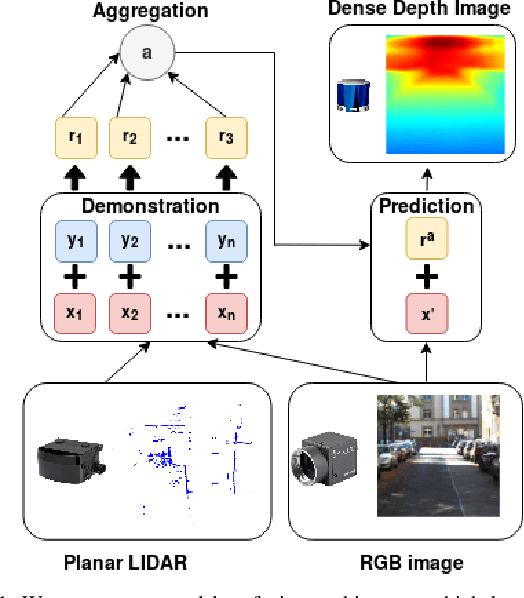
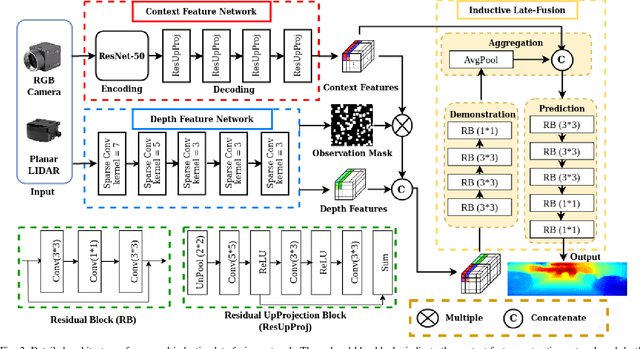
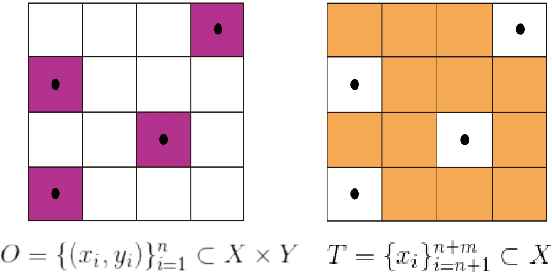
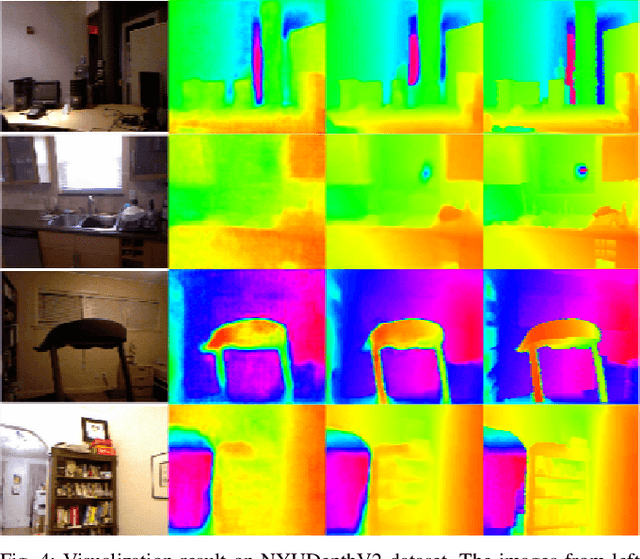
Abstract:Modern high-definition LIDAR is expensive for commercial autonomous driving vehicles and small indoor robots. An affordable solution to this problem is fusion of planar LIDAR with RGB images to provide a similar level of perception capability. Even though state-of-the-art methods provide approaches to predict depth information from limited sensor input, they are usually a simple concatenation of sparse LIDAR features and dense RGB features through an end-to-end fusion architecture. In this paper, we introduce an inductive late-fusion block which better fuses different sensor modalities inspired by a probability model. The proposed demonstration and aggregation network propagates the mixed context and depth features to the prediction network and serves as a prior knowledge of the depth completion. This late-fusion block uses the dense context features to guide the depth prediction based on demonstrations by sparse depth features. In addition to evaluating the proposed method on benchmark depth completion datasets including NYUDepthV2 and KITTI, we also test the proposed method on a simulated planar LIDAR dataset. Our method shows promising results compared to previous approaches on both the benchmark datasets and simulated dataset with various 3D densities.
Low-cost LIDAR based Vehicle Pose Estimation and Tracking
Oct 03, 2019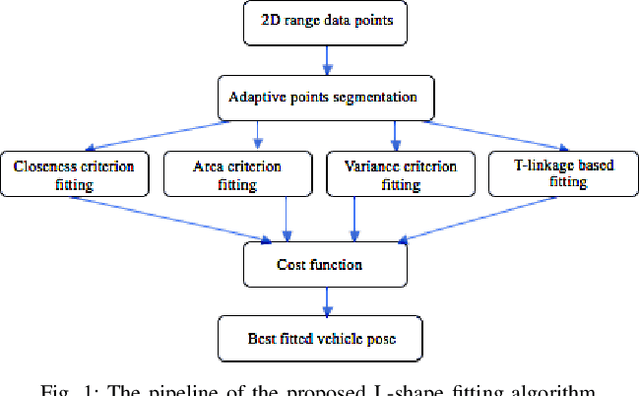
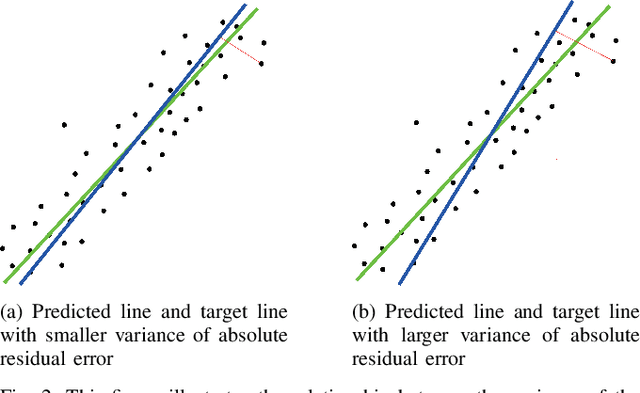
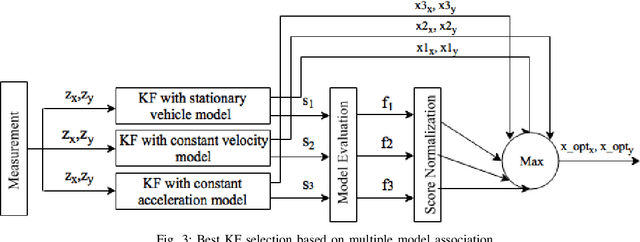
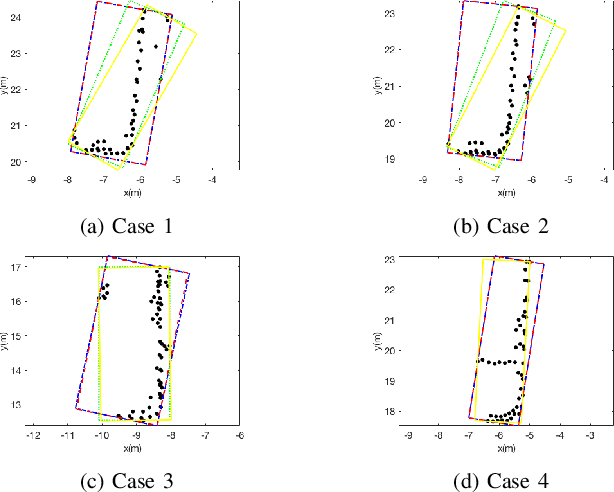
Abstract:Detecting surrounding vehicles by low-cost LIDAR has been drawing enormous attention. In low-cost LIDAR, vehicles present a multi-layer L-Shape. Based on our previous optimization/criteria-based L-Shape fitting algorithm, we here propose a data-driven and model-based method for robust vehicle segmentation and tracking. The new method uses T-linkage RANSAC to take a limited amount of noisy data and performs a robust segmentation for a moving car against noise. Compared with our previous method, T-Linkage RANSAC is more tolerant of observation uncertainties, i.e., the number of sides of the target being observed, and gets rid of the L-Shape assumption. In addition, a vehicle tracking system with Multi-Model Association (MMA) is built upon the segmentation result, which provides smooth trajectories of tracked objects. A manually labeled dataset from low-cost multi-layer LIDARs for validation will also be released with the paper. Experiments on the dataset show that the new approach outperforms previous ones based on multiple criteria. The new algorithm can also run in real-time.
 Add to Chrome
Add to Chrome Add to Firefox
Add to Firefox Add to Edge
Add to Edge